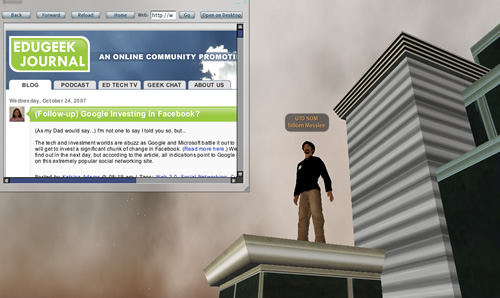THE Journal released an interview last week with Chris Chinnock (board member of the 3D@Home Consortium) about the future of 3-D in Education. If you haven’t read the article, then go read it – there is some interesting information in there. But I have a few thoughts that were left out.
What about computer graphics/modeling and virtual worlds in 3-D? Chinnock discusses the need for content in 3-D. Why not give students the ability to create content/images/etc? Will the programs to do this be too expensive for schools to utilize in individual classes like they do with some programs such asMicroSoft Word?
These questions (and more) will all probably be asked and answered in the near future, I am sure. Not to mention that the future of 3-D is not just about projectors. There are also advances being made in holographic displays and three-dimensional monitors.
But this is all leading to the fact that the walls between the real world and virtual reality are slowly crumbling away. We now have the ability to create a virtual reality room. Surround sound and cameras that can follow your movements already exist. Combine that with the projectors that Chinnock discusses, pointing in all directions in a room, connected to a super-fast computer that can feed realistic CG to those projectors based on your movements, and you pretty much have the early version of a Star Trek holodeck. Imagine what Second Life would be like then?
Matt is currently an Instructional Designer II at Orbis Education and a Part-Time Instructor at the University of Texas Rio Grande Valley. Previously he worked as a Learning Innovation Researcher with the UT Arlington LINK Research Lab. His work focuses on learning theory, Heutagogy, and learner agency. Matt holds a Ph.D. in Learning Technologies from the University of North Texas, a Master of Education in Educational Technology from UT Brownsville, and a Bachelors of Science in Education from Baylor University. His research interests include instructional design, learning pathways, sociocultural theory, heutagogy, virtual reality, and open networked learning. He has a background in instructional design and teaching at both the secondary and university levels and has been an active blogger and conference presenter. He also enjoys networking and collaborative efforts involving faculty, students, administration, and anyone involved in the education process.

